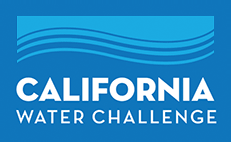

Scroll down for a highly visual overview with California Water Facts
196 gallons per day
the15th
highest
per capita
consumption
in the nation
About 75% of the annual precipitation falls north of Sacramento, while more than 75% of the demand for water is south of the capital city.
Most of the rain and snowfall occurs between October and April, while demand is highest during the hot and dry summer months.
Seven major systems of aqueducts and associated infrastructure exist today to capture and deliver water within the state. Two of the most important projects are the federal Central Valley Project and the State Water Project.
In an average year the State Water Project accounts for 4% and the Central Valley Project for 9% of dedicated water supplies via an extensive network of dams, pumping stations, and canals.
Regional suppliers transport water hundreds of miles from the Sierra Nevada's watershed to urban areas in Los Angeles and the San Francisco Bay Area.
The Colorado River and local water projects account for 30% of dedicated water supplies.
Yes! Household use along with pumping, treating and transporting water is energy intensive, using 20% of California’s electricity, 30% of the state’s natural gas not used by power plants, and 88 million gallons of diesel fuel.
This is not surprising, given that millions of gallons are transported hundreds of miles from the natural point of origin in the northern and eastern parts of the state to users in the coastal and southern regions. Understanding the relationship between water and energy is crucial to reducing water-related energy consumption, which not only lowers the cost of water but also provides additional environmental benefits such as reducing the greenhouse gas emissions associated with producing that energy.
By 2030, the Bureau of Reclamation estimates that California will have an annual unmet water demand (or water gap) of almost 4.9 million acre-feet (1.5 trillion gallons) in an average year and more in a dry year. This long-term water gap is one focus of the California Water Challenge, however, this is a simplified take on water in California, as each region has its own water supply and demand that is not connected to other regions or the state as a whole.